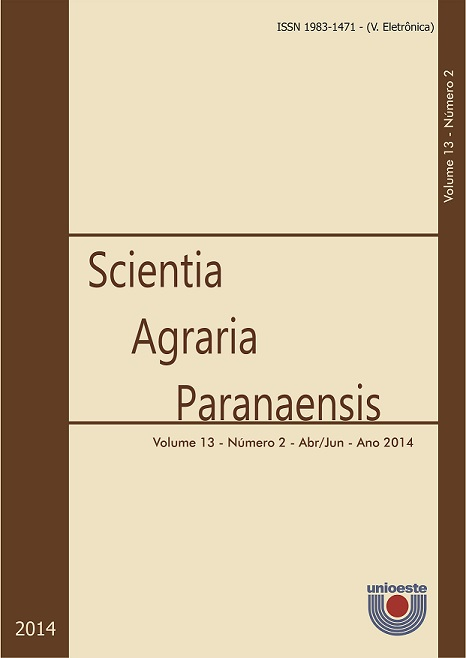Quality of strawberry fruits under different shading conditions, and type of mulching in West of Paraná
DOI:
https://doi.org/10.18188/sap.v13i2.7350Keywords:
Fragaria x ananassa Duch, sombreamento, mulching.Abstract
West of Paraná
The use of mulching and shade screens are determinant cultivation practices for maximizing the production and the quality of the strawberries production. Aiming at verifying the quality of the fruits of strawberries, Fragaria ananassa cv. Camarosa short day, under different kinds of mulching and levels of shading, this experiment was conducted at the Experimental Farm of the State University of the West of Paraná (Unioeste), Campus of Marechal Cândido Rondon, Paraná, Brazil. The seedlings were placed in a 30 x 30 cm within three rows in bed of 1.0 m wide, receiving irrigation and cultivation of fertilization and pest management, according to the culture demand. After the fixation of the seedlings, mulch was inserted over the flower beds, and the screen with 50% of shade to 50 cm tall. The experimental design was randomized blocks, factorial double, 4 x 2 (black polyethylene 200 μm; Tifton grass hay, non-textured fabric, and sifted charcoal x open field and 50% shading), containing three replicates with 12 plants for each repetition. For the open field condition, we observed statistic differences in the percentage of healthy fruit, fruit biomass and the number of fruits/plant, besides the higher levels of soluble solids, favoring the quality of the strawberries fruits. The Tifton mulching mower can be considered as an important coverage construction, since it can be naturally recycled providing plant nutrients and organic material to the soil, instead of generating waste, as the plastic commonly does.
Downloads
Published
How to Cite
Issue
Section
License
Aviso de Direito Autoral Creative Commons
Política para Periódicos de Acesso Livre
Autores que publicam nesta revista concordam com os seguintes termos:
1. Autores mantém os direitos autorais e concedem à revista o direito de primeira publicação, com o trabalho simultaneamente licenciado sob a Licença Creative Commons Attribution que permite o compartilhamento do trabalho com reconhecimento da autoria e publicação inicial nesta revista.2. Autores têm autorização para assumir contratos adicionais separadamente, para distribuição não-exclusiva da versão do trabalho publicada nesta revista (ex.: publicar em repositório institucional ou como capítulo de livro), com reconhecimento de autoria e publicação inicial nesta revista.
3. Autores têm permissão e são estimulados a publicar e distribuir seu trabalho online (ex.: em repositórios institucionais ou na sua página pessoal) a qualquer ponto antes ou durante o processo editorial, já que isso pode gerar alterações produtivas, bem como aumentar o impacto e a citação do trabalho publicado (Veja O Efeito do Acesso Livre).
Licença Creative Commons
Esta obra está licenciada com uma Licença Creative Commons Atribuição-NãoComercial-CompartilhaIgual 4.0 Internacional, o que permite compartilhar, copiar, distribuir, exibir, reproduzir, a totalidade ou partes desde que não tenha objetivo comercial e sejam citados os autores e a fonte.


